
Essential Groundworks Tips for Preparing Your Garden for a Pergola
Adding a pergola to your garden creates a beautiful outdoor living space that extends your home's footprint. However, the success of your pergola project largely depends on the groundwork preparation that takes place before installation. With expert advice from Oliver Corkery at Corker Outdoor Living & Landscapes Supplies, this comprehensive guide will walk you through everything you need to know about preparing your garden for a pergola.
Planning Your Pergola Size and Layout
Before breaking ground, careful planning is essential to ensure your pergola fits perfectly in your garden space. Your pergola's size will be dictated by several key factors including how you intend to use it, the available space, and local regulations.
For entertainment areas, you typically want to allow at least 3m x 6m to comfortably fit dining
furniture. If you’re installing a pergola for shade or aesthetic purposes, make sure there’s plenty of clearance at the sides so you can access it easily. It's also important to check with
your local authority about any restrictions regarding pergola dimensions or placement, particularly near property boundaries.
Finally, consider the sun's path throughout the day when positioning your pergola to provide shade when it’s needed most, and make sure the proportions complement your home and garden rather than overwhelming the space.
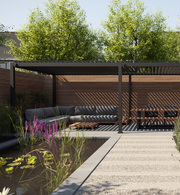
Essential Groundworks Preparation
Proper groundwork is the foundation of a stable, long-lasting pergola installation. Begin by thoroughly clearing the area of all vegetation, including roots form trees or shrubs that might cause future problems, along with any debris, rocks, and old paving materials to create a clean slate for accurate measurements and level installation.
You’ll want to address any existing drainage issues before proceeding further with the installation as these will pose a bigger problem once the pergola is in the ground. To prevent water from building up under the structure, add drainage channels around the perimeter and grade the area slightly away from buildings to direct water runoff.
The type of pergola you’re choosing will play a big part in the type of foundation you need too. For freestanding pergolas, you may want to add concrete footings for extra stability.
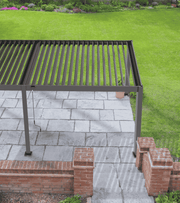
Timing Your Pergola Installation
The sequence of groundwork and pergola installation significantly impacts your project's success. Completing these groundworks before installing your pergola offers several advantages. It creates a solid foundation for precise alignment of pergola posts, ensures proper levelling and drainage before the structure is in place, and it reduces the risk of damaging the pergola during ground preparation.
However, some elements are better completed after the pergola is in place, such as final paving that can be precisely fitted around posts and surface-level landscaping that can be adjusted to complement the installed structure.
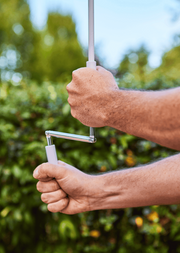
Creating a Stable Base
A properly prepared base is essential for longevity and prevents common issues like shifting, cracking, and poor drainage in your pergola's foundation, particularly if you’re going to be installing heavy equipment like an outdoor
kitchen beneath it. Begin with excavation, digging 6-8 inches below your intended finished surface level to accommodate all necessary layers for proper support.
Next, lay and compact at least 4 inches of crushed stone or type 1 MOT aggregate (a crushed aggregate or hardcore) as your sub-base. Position a geotextile membrane between the soil and sub-base layers to prevent any weed growth and soil movement, then use a plate compactor to create a solid, even foundation through thorough compaction of materials.
The next step is to apply a 1-2 inch layer of sharp sand and cement mix (typically a 4:1 ratio) for precise levelling before installing your chosen paving. Finally, install durable edging to maintain the shape and prevent lateral movement of your slabs.
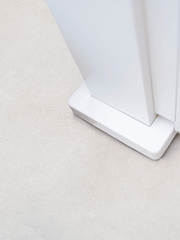
Selecting Materials for Your Patio or Paving
The surface beneath your pergola deserves just as much careful consideration as the pergola itself. When choosing patio materials, you need to balance factors such as durability, aesthetic appeal, maintenance requirements, budget considerations and safety features.
Materials like natural stone or porcelain will withstand weather changes and foot traffic but consider how much upkeep you're willing to carry out on the paving. Porcelain, for example, requires less maintenance compared to other options. You may also want to match the material to others used to build your home for a cohesive look.
It's important to balance initial cost against longevity for the best value, and always prioritise slip-resistant surfaces, especially in areas that might get wet during rainy weather or from garden irrigation. This will create a practical yet stylish area that you’ll want to use year-round.
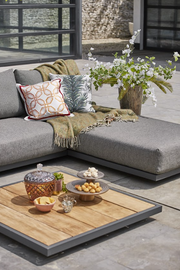
Taking the time to properly prepare your garden for a pergola installation pays dividends in longevity, stability, and overall enjoyment of this addition to your garden. By following these groundwork guidelines, you'll create a solid foundation for your pergola that will stand the test of time while enhancing your outdoor living space.
Explore our range of pergolas and furniture collections, to create your perfect summer set-up.





